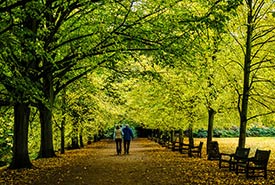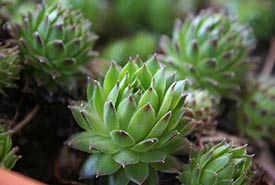Back to school: How to incorporate nature into a busy school schedule

Taking a walk in the park (Photo by Garry Knight, CC BY-SA 2.0)
One of the greatest challenges as a student is managing your time. Speaking from experience, it is all too easy to get caught up in a sea of busyness without realizing it. With demanding class schedules, tight assignment deadlines, extracurricular activities, fitness, part-time jobs and seemingly never-ending to-do lists, students have a lot on their plates. For many, adding time for nature into the mix seems impossible, and when asked, the first response is usually, “I can’t. I don’t have time.”
There is growing science-backed research on the benefits of spending time outdoors: from nurturing our creativity to significantly improving our physical and mental health. Spending time in nature is refreshing and a great way to de-stress and uplift mood.
As students, one of the most important things we can do for ourselves is taking time for self-care, which can come in the form of spending time in nature. Spending some quality time in nature is one of the best ways to take a step back, breathe and clear the mind.
Time for nature doesn’t necessarily mean a change in your routine or always going outside. It doesn’t need to be complicated. Through some minor adjustments, ask yourself what can you do differently to incorporate and treat yourself to doses of nature in your day and bring nature to you.
Take it outside

Take your workout outdoors (Public Domain, CC0)
To start, the simplest way to incorporate more green time in your life is to take bits and pieces of your daily routine outside. While this may be easier said than done, begin by determining what you can do easily outdoors that you already do indoors. A great example is moving your workout outdoors. Try taking a jog or walk in your local park. If you’re a fan of yoga, why not make the best of both worlds and take a stab at doing yoga outside? Here are five workouts you can take into nature.
Consider opting for a change in scenery by eating lunch outdoors. This is a great way to take the moment to breathe in some fresh air and rejuvenate from being in a classroom. Invite some friends along with you and have an impromptu picnic.
Instead of taking breaks from studying indoors by spending more time behind a screen, go for a short walk outside. This will not only ease your mind and provide a sense of clarity, it will help you process the information you were studying. Better yet, study outdoors.
A simple assessment of your day and realizing you can easily get outside by altering how you go about performing your daily routine will open up a world of outdoor opportunities.
Bring nature to you

Hen and chicks succulent plant (Photo by Aaron Hyatali, Public Domain)
When going outside is not possible, especially during winter or bad weather, there are still ways to get your nature fix. Bring nature to you by getting a houseplant. Besides the obvious aesthetic value, houseplants are great for purifying the air. As humans, we breathe in oxygen and release carbon dioxide, while it’s vice versa for plants. It’s a win-win for everybody. Succulents make great indoor plants as they are easy to care for and perfect for beginners.
You can lend a hand to the ecosystem by taking a break from studying indoors and head outdoors to plant native species right in your own backyard. Native plants often provide better habitat for many wildlife species compared to non-native plants. This is especially important when cities are increasingly urban and many species face habitat loss. For more on planting with purpose, check out this helpful guide.
Think outside the box

Photographing nature (CC0 Public Domain)
Get creative with how you make time for nature, and remember to have fun. Do you drive to school? Instead of parking close to the door, arrive early, park further away and reroute your walk to class to take the time to connect with nature on your campus.
Do you have a passion for photography? Discover nature through the lens of your camera and notice how different nature can look up close through a camera and in different seasons. Pull out your camera or cellphone and spend time photographing nature while you head to your next class.
Consider joining an environmental club at school. Nothing beats connecting with the environment than volunteering for it.
Plan it out and make it a habit

Monthly planner notebook (Public Domain, CC0)
Now that you have an idea of how you can incorporate nature, it’s time to make a plan. Spur-of-the-moment activities are great, but the best way to ensure you integrate nature into your school life, and become a stickler for it, is to plan ahead.
First, try allotting time for nature two times a week. Slowly add on a day as you are able until you are incorporating nature every day. Once you have become an expert in adding nature to your busy schedule, change it up. Challenge yourself to do something different every day. Do what feels right for you and make it a habit.
This school year, start anew and challenge yourself to incorporate nature into your life.
The Conservation Internship Program is funded in part by the Government of Canada’s Summer Work Experience program.


